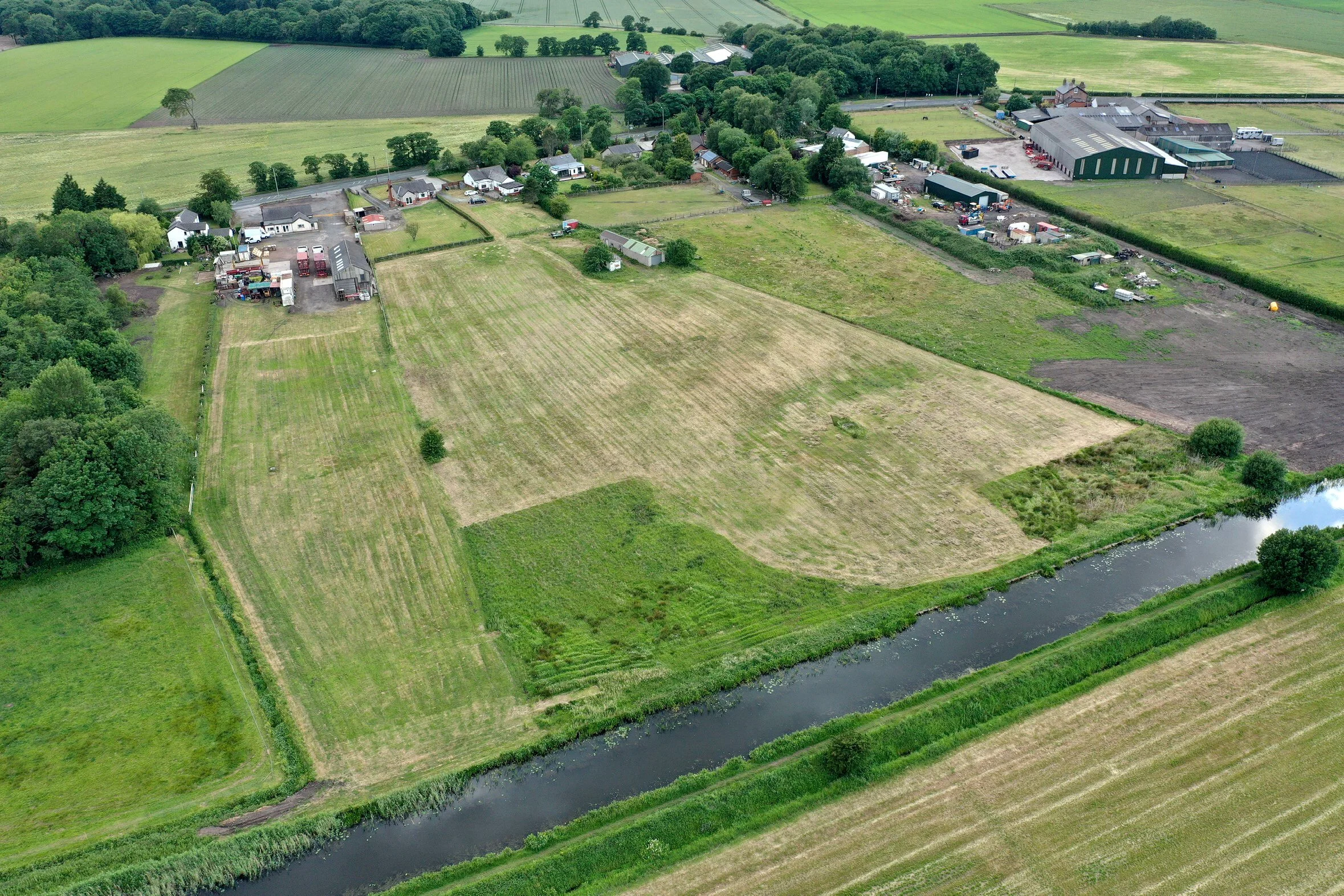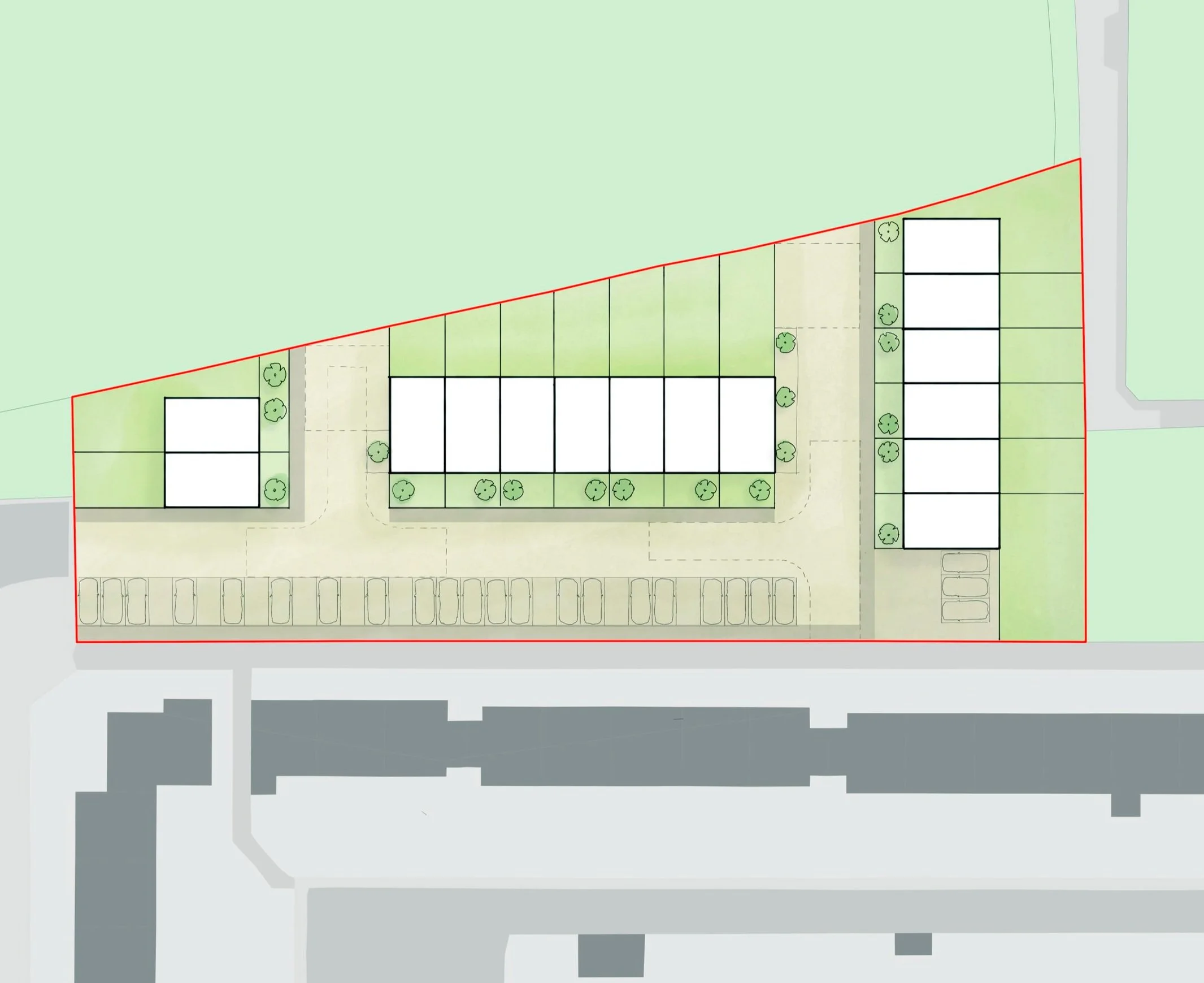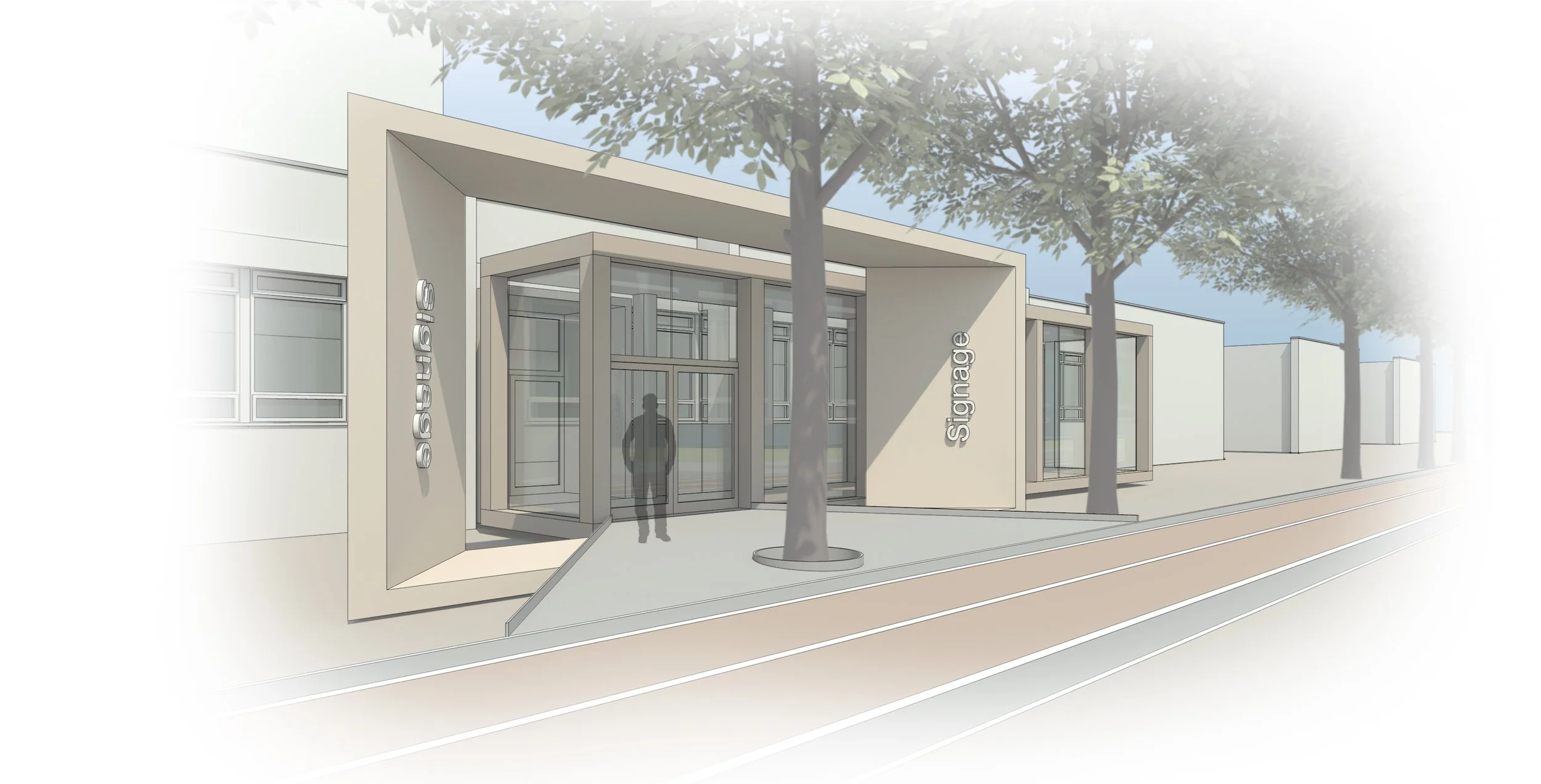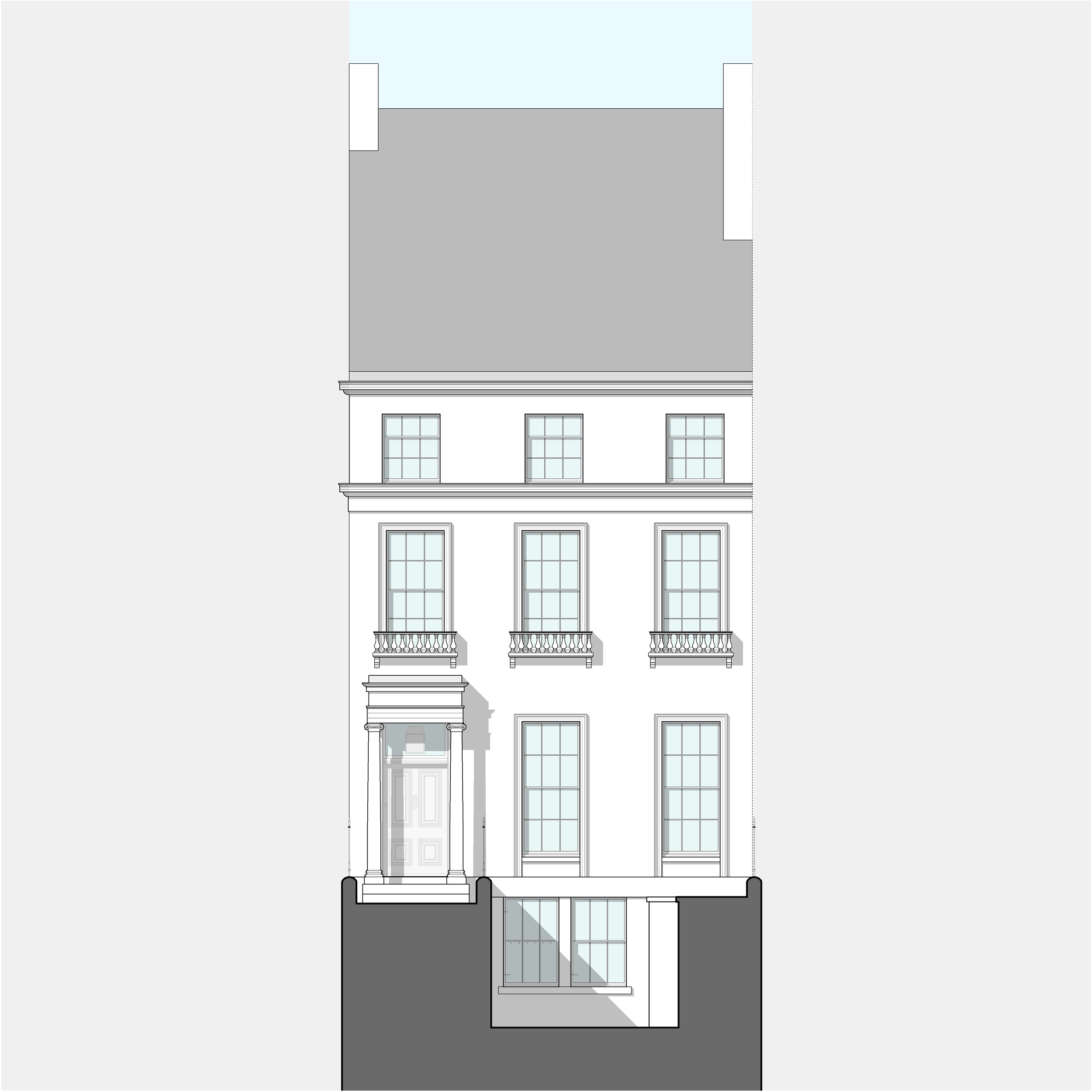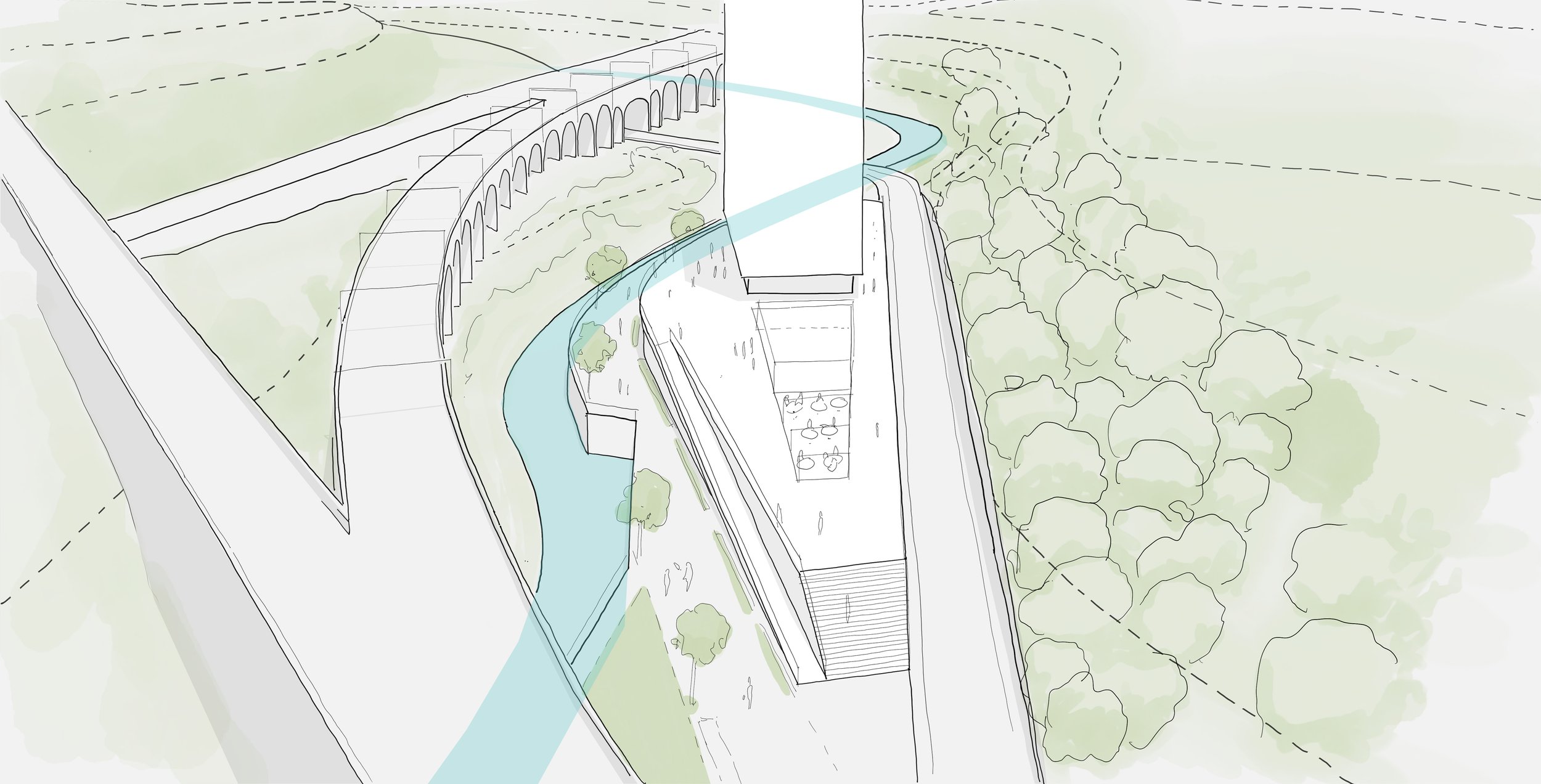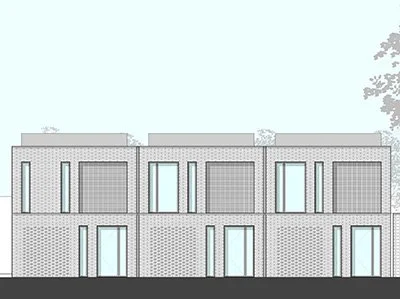Planning Application: Cheadle Hulme
This project involves the conversion, extension and rationalisation of a pair of Edwardian semi-detached dwellings in Cheadle Hulme to create four high-quality apartments with ground floor commercial space.
Feasibility: Manchester City Centre
We were commissioned to explore the feasibility of developing a long-overlooked yet prominent site in Manchester City Centre. The plot occupies the truncated end of a Victorian terrace, left incomplete by redevelopment in the 1960s. Our proposal seeks to restore a sense of continuity and completion to the street, crafting a contemporary bookend that acknowledges the historic rhythm of the terrace while introducing a bold, confident presence.
Conservation Guide: Hand Made Bricks
Recently, we had the challenge of sourcing handmade bricks for a project in a Conservation Area in West Lancashire. The original bricks told a story; they were likely made by itinerant brickmakers around 1860 and would have been produced in a brick clamp; a traditional method where bricks were fired in a temporary kiln built on-site. Interestingly, just across the road from the building is an old fishing pond, which was likely the original clay pit that provided the raw material for these bricks.
Building Regulations: Hotel Rooms, Buxton
PAA ltd prepared and managed a Planning and Building Regulations package for the conversion of a former bank into a new apartment hotel, located within the Buxton Conservation Area. Buxton is an elegant spa town in Derbyshire, celebrated for its Georgian and Victorian architecture, historic Crescent and Pavilion Gardens, and its status as a cultural and visitor hub set within the Peak District.
Feasibility: West Lancs Green Belt
We were appointed to carry out a feasibility study for the potential development of three new dwellings on a Green Belt site at Liverpool Road, Rufford. The study formed the basis of a Pre-Application submission to West Lancashire Local Planning Authority.
Article: The ‘Grey Belt’ and NPPF 2024
The 2024 update to the National Planning Policy Framework (NPPF) has now been published by the government. This update has brought a significant shift in how development in the Green Belt will be handled. In the past, building on Green Belt land was generally considered inappropriate, with very few exceptions.
Conservation Area Consent: Wigan
We secured Conservation Area consent for the renovation of a former bank building within the Hindley Conservation Area. The existing building had been derelict and exposed to the elements for some time, and our proposal sought to carefully repair and reinstate its historic character while adapting it for contemporary residential and retail use.
Site Photography: Private House Feature Stair
We worked closely with the client and fabricator, Fineline Balustrades, to create a minimal, contemporary feature stair. The structural glass balustrades are fixed into the sides of the open, solid white oak treads creating clean lines and adding to sense of lightness within the space.
Planning Approval: Extension to 20c Church, Manchester
We secured Planning Permission for an extension to a church in Manchester. The original building was constructed in 1957 as the Bethshan International Church, designed by architect J. C. Prestwich Brown. It is an interesting example of post-war brick modernism, with influences of Streamline Moderne .
Feasibility Study: Flixton, Stockport
We were commissioned by a private client to explore the feasibility of developing an overlooked site in Trafford. Our work established that fifteen dwellings could be accommodated on the site while respecting Trafford’s policies on interface distances and parking ratios
Guide: Converting Offices to Flats Without Planning
Converting office spaces into residential flats presents a viable solution to tackle the housing shortage in the UK. While obtaining Planning Permission is often necessary for such conversions, there are specific scenarios where it is possible to proceed without it.
Feasibility Study: Chelford Green Belt
We were commissioned to produce a Feasibility Study for the former bowling green site in Chelford, a picturesque Cheshire village known for its historic homes and rural setting.
Feasibility: Post Industrial Development, Manchester
We were commissioned to produce a feasibility study, which formed the basis of several pre-application submissions to Manchester City Council. The site is the location of a former textile mill and is situated alongside the River Irk.
Planning Application: Apartments, Chester
The proposals comprise 6 no city-centre apartments arranged over two storeys with basement parking. The site was formerly used as a workshop for light industry and is currently vacant. The site is an infill with an irregular shape derived from the fact that it was simply a piece of land to the rear of the surrounding terraced housing.
Sketch Design for a Garden Office in Alderley Edge
Garden office pavilion for private client in Alderley Edge designed around a mature tree.
Conservation Area Consent: Sefton Park
Set behind a once-grand Victorian mansion within the Sefton Park Conservation Area lay a disused brownfield site ready for a new chapter. Our proposal introduced three high-quality executive family townhouses that balanced compact, contemporary design with a respect for the historic context. The architectural response was deliberately restrained, ensuring that when viewed from the street, the new buildings sit almost imperceptibly within their setting. The Flemish bond brickwork of the former hotel is reinterpreted by employing a crisp, rigorous contemporary language, establishing a dialogue between old and new.





